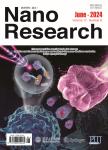Inorganic nanoparticles and the microbiome
Inorganic nanoparticles and the microbiome作者机构:Division of Pharmacoengineering and Molecular Pharmaceutics Eshelman School of Pharmacy University of North Carolina atChapel Hill Chapel Hill NC27599 USA
出 版 物:《Nano Research》 (纳米研究(英文版))
年 卷 期:2018年第11卷第10期
页 面:4936-4954页
核心收录:
学科分类:0808[工学-电气工程] 07[理学] 0809[工学-电子科学与技术(可授工学、理学学位)] 08[工学] 082304[工学-载运工具运用工程] 070304[理学-物理化学(含∶化学物理)] 0805[工学-材料科学与工程(可授工学、理学学位)] 0703[理学-化学] 0823[工学-交通运输工程] 0702[理学-物理学]
主 题:inorganic nanoparticles microbiota microbiome bacteria metals
摘 要:Routine exposure to inorganic nanoparticles (NPs) that are incorporated into consumer products such as foods/drinks, packaging materials, pharmaceuticals, and personal care products (e.g. cosmetics, sunscreens, shampoos) occurs on a daily basis. The standard everyday use of these products facilitates interactions between the incorporated inorganic NPs, mammalian tissues (e.g. skin, gastrointestinal tract, oral cavity), and the community of microbes that resides on these tissues. Changes to the microbiome have been linked to the initiation/ progression of many diseases and there is a growing interest focused on understanding how inorganic NPs can initiate these changes. As these mechanisms are revealed and defined, it may be possible to rationally design microbiota- modulating therapies based on inorganic NPs. In this article, we will: (i) provide a background on inorganic NPs that are commonly found in consumer products such as those that incorporate titanium, zinc, silver, silica, or iron, (ii) discuss how NP properties, microbiota composition, and the physiological microenvironment can mediate the effects that inorganic NPs have on the microbiota, and (iii) highlight opportunities for inorganic NP therapies that are designed to interact with, and navigate, the microbiome.



